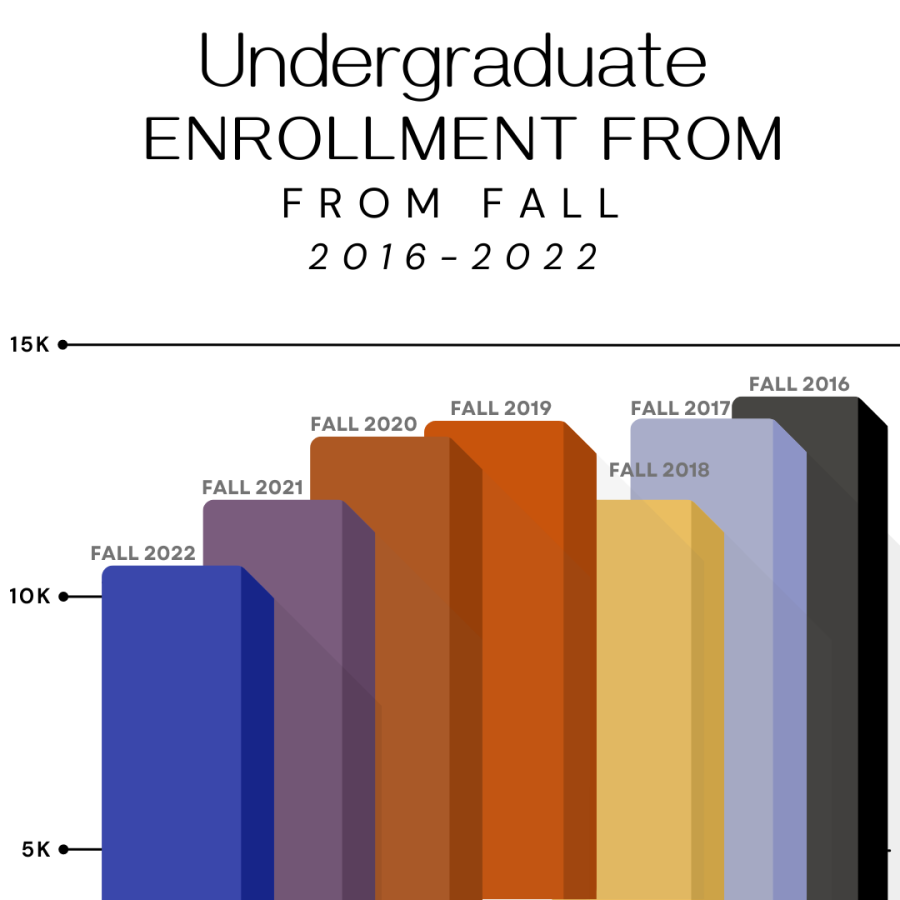CSUEB Faces 21% Enrollment Decline in Recent Years
May 10, 2023
The recent drop in undergraduate enrollment at California State University, East Bay (CSUEB) has created a budget gap that will endanger the livelihoods of faculty and staff if not addressed.
The university is facing a projected $6 million budget gap for the 2024-25 fiscal year. “This anticipated ‘gap’ is due to a new reallocation plan proposed by the Chancellor’s office,” stated Myeshia Armstrong, Vice President of Administration and Finance at CSUEB. “The campus continues to fall below the preset enrollment target, so the pending loss is inevitable.”
The university’s undergraduate enrollment has steadily decreased since the fall 2016 semester when over 13,500 students were enrolled. Only 10,700 students were enrolled in the fall 2022 semester—nearly a 21% decline over the past six years.
This significant drop in enrollment will harm faculty and students. Without a steady stream of students, classes will be canceled due to low interest, additionally compromising the quality of education overall. Lecturers will lose work, which puts their health and retirement benefits at risk.
“CSUEB is already suffering from a tenure-density problem, which means that the ratio of tenure-track professors to students on campus is too low,” said Rachael Stryker, President of the East Bay chapter of the California Faculty Association (CFA) and Associate Professor in the Human Development and Women’s Studies Department.
The university cannot hire necessary faculty if revenue from student tuition decreases. ”Departments are analyzing their operations to determine if open positions are needed at this time in light of the enrollment decline,” Armstrong wrote.
It is impossible to tell which positions will remain open, but the CSU system has historically prioritized its administration over its faculty and staff.
“At the same time that faculty salaries have plummeted, those at the top have done very well,” according to a paper written by the CFA titled “Salary, Staffing Priorities, and the CSU’s 1%.” From 2004 to 2014, CSU presidents enjoyed an average salary increase of 36%, whereas the average salary for full-time faculty only increased by 10%, a drastic difference.
“Nobody decides to enroll at a university based on how many administrators it has. Students come because it has enough amazing faculty and caring staff who will help them learn and graduate,” Stryker concluded.
CSUEB administration must consider the needs of its faculty and staff as they prepare to fix the budget gap.

















